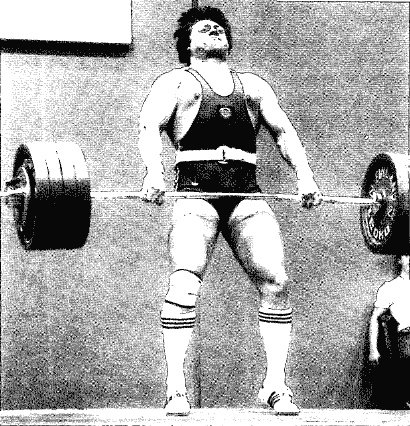Here is a quick read if you are interested in how the Russian’s designed their training back in the days.
The paper is called The Russian Approach to Planning a Weightlifting Program [Preview Below] and is from 1995. So what was considered new then is already 17 years old by now.
Still interesting to see how they did their exercise grouping based on the varying effects on the human body etc.
Below are some excerpts from it.
Exercise Grouping
 The model presented here (Tables 2 and 3 below) is that of the national weightlifting team of the former Soviet Union.
The model presented here (Tables 2 and 3 below) is that of the national weightlifting team of the former Soviet Union.
To reach their highest potential, Soviet weightlifters must also include supplemental exercises such as squats, power snatches, and power cleans.
We combine different types of snatch and clean and jerk exercises in order to obtain the optimum results in the competitive lifts.
These types of exercises are classified into five groups(although some coaches put squats and pulls in one group):
- Classic snatch; Power snatch; Classic snatches from different starting positions; Power snatches from different starting positions.
- Classic clean; Power clean; Classic cleans from different starting positions; Power cleans from different starting positions.
- Classic snatch pulls; Classic clean pulls; Classic snatch pulls from different starting positions; Classic clean pulls from different starting positions; Bend-overs (good mornings with a barbell behind the neck).
- Back squats; Front squats; Splits (lunges).
- Classic jerk; Push-jerk; Push-press; Arm and shoulder exercises (press behind head, military press, etc.).
The first four groups emphasize overload in the lower body while the fifth group emphasizes overload in the upper body.
To avoid overtraining, one should combine the first four groups with the last group. This training structure is based on just one group of exercises per workout, as seen in the following example:
- Monday: 1st and 4th groups
- Tuesday: 5th group
- Wednesday: 2nd and 4th groups
- Thursday: 5th group
- Friday: 1st, 3rd, and 4th groups
- Saturday: 2nd and 5th groups
Alternating high intensity workouts with medium and low intensity workouts will help the weightlifter to recover properly and will prepare him or her for the next workout. According to this distribution, we plan and predict our intermediate goals.
Table 2: Example of Macrocycle Training, 5 Phases: Hypertrophy, Transistion to Basic Strength, Basic strength, Strength & Power, Peaking
Table 3: Example of the Workouts in each Phase


Комментариев нет:
Отправить комментарий